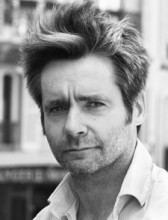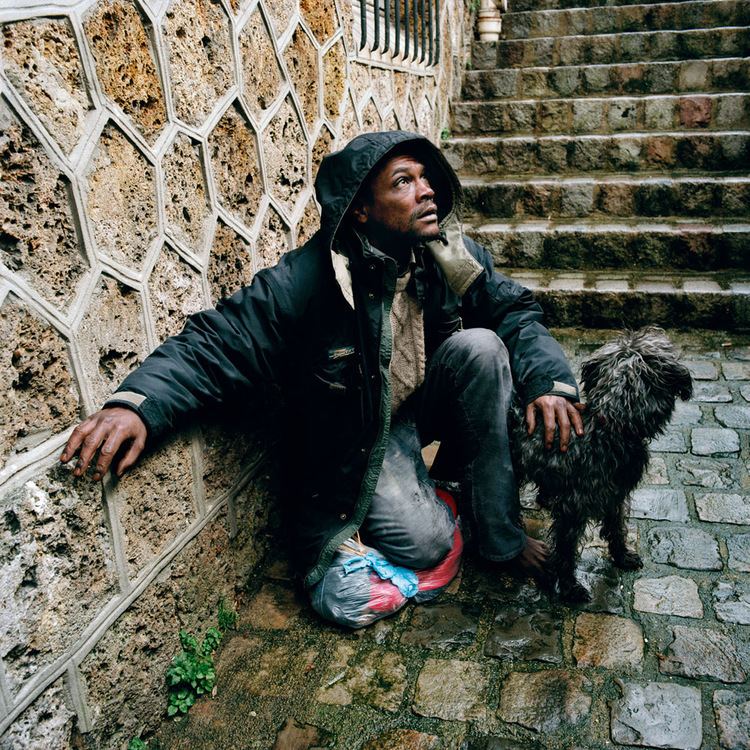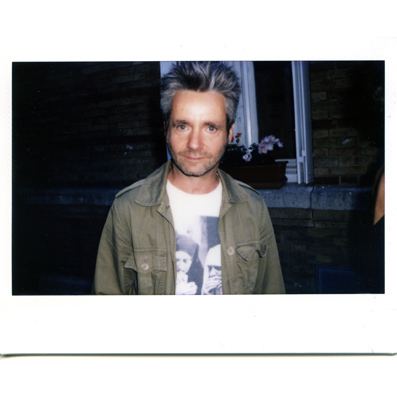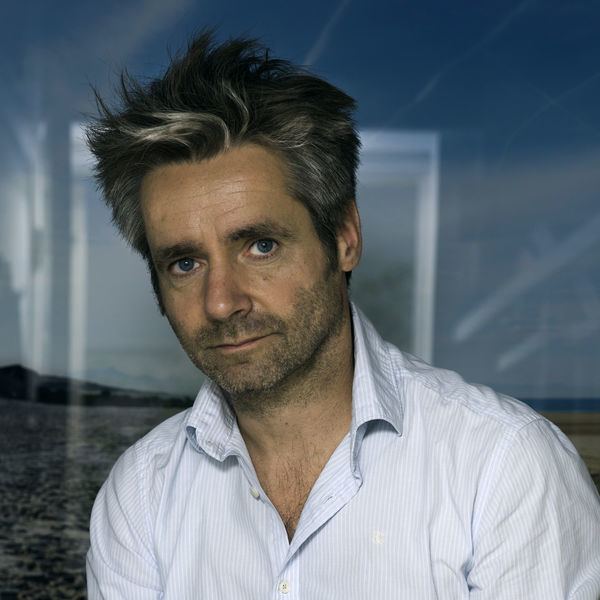Occupation photographer | Name Christophe Beauregard | |
 | ||
Born January 9, 1966 (age 59) ( 1966-01-09 ) SaintesFrance | ||
Christophe Beauregard (born January 9, 1966) is a French portrait photographer who started his photographic career in the commercial sector. Initially working as a portraitist for the press and advertising campaigns he then jointly develop and pursue of his personal creative impulse. He is currently recognized in France and abroad as a contemporary photographer focusing on key themes such as identity and individualism in post-modern societies.
Contents
- Youth
- Commercial Work
- Decisive Moment
- Notables Portraits
- Disguises shams
- Hush Hush
- Semantic Tramps
- Devils in Disguise
- Its getting dark
- Le Meilleur des Mondes
- Review
- Pentimento
- Chirurgies
- Personal Exhibitions
- Group Exhibitions
- Etudes critiques
- References

Youth

He left home to complete further studies in ‘English Literature and Civilisation' at Université François Rabelais in Tours, where he focused on the narratives and the author’s voices. Before completing his degree, Beauregard moved to Scotland in 1987 with the intention to teach French in a local high school. Aware of the Scottish mythological heritage, his newly found semantic approach encouraged a more dynamic creative urge. In search of an outlet, he attended painting classes and showed promising talent in portraiture.

Encouraged by his teacher, Beauregard continued his creative search on his return to France. He enrolled himself at the School of Fine Arts (Ecole Régionale des Beaux Arts) in Tours in 1990 where he decided to specialize in photography. Using the photograph as his chosen medium, he presented his first line of work titled “Pinder” (after the French circus) as his final project. A black and white series of circus artists’ portraits in an August Sander’s manner.
Commercial Work
Following his graduation from Beaux Arts, Beauregard moved to Paris in 1993 to start his working career as an assistant for Fabian Cevallos, a celebrity photographer. He was then admitted to work as an assistant in a paparazzi photographic agency, where he was responsible for the organisation of the studio as well as the selling of the photos (due to his proficiency in languages). Throughout the 90’s Beauregard expanded his commercial creative profession by supplying magazines and celebrities with photographs. Working for magazines such as Libération, Le Monde, and Télérama, Beauregard also landed assignments such as professional head-shots for large corporations such as LMVH, Publicis, and Havas. Taking into account the public exposure of the latter job opportunities, Beauregard also promoted himself by photographing the socially famous such as Richard Price, Erwin Olaf, Dan Graham, and Georg Baselitz.
Decisive Moment
In 2003 Nicolas Thely, an art critic from Le Monde, and Hélène Sirven, a professor of Fine Arts at La Sorbonne, prompted the offer to exhibit Beauregard’s first artistic series, Chirurgies. Held at the Bureau d’Hypothèses, salle Michel Journiac, From then on Beauregard decided to conduct jointly his commercial career and his personal artistic series.
Notables Portraits
Laure Adler, Akhenaton, Mathieu Amalric, John Armleder, Yann Arthus-Bertrand, Georg Baselitz, Booba, Pascal Bruckner, John Cale, Philippe Decouflé, Dee Dee Bridgewater, Virginie Despentes, Emmanuelle Devos, Nicolas Duvauchelle, Fellag, Marie-Agnès Gillot, Michel Gondry, Dan Graham, Interpol, Aki Kaurismäki, Peter Klasen, Wolfgang Laib, Fabrice Luchini, Annette Messager, Philippe Meste, Takashi Miike, Jean-Pierre Mocky, Moebius, Peter Mullan, Sofi Oksanen, Erwin Olaf, Opus AKOBEN, Orlan, Jean d'Ormesson, Jean-Michel Othoniel, Richard Price, Atiq Rahimi, Yasmina Reza, Ugo Rondinone, Edith Scob, Alain Seban, Lhasa de Sela, Jorge Semprún, Michel Serrault, Ravi Shankar, Richard Shusterman, Simone Veil, Jacques Villeret, The Warlocks, Lambert Wilson…
Disguises & shams
The notion of a dual personality is a recurring theme in Beauregard’s work. Constantly questioning the principle of identity, the viewer is welcomed to participate in the act of deciphering.
Hush ... Hush
Hush...Hush provides insight into the daring world of the paparazzi. It suggests the distance a photographer of this profession is willing to go in order to capture the more profitable photograph. With Hush...Hush, Christophe Beauregard exposes a paparazzi photographer’s ruthless techniques of disguise that allow him to gain access to a celebrity.
Semantic Tramps
Inspired by the drug addicts looming in his neighbourhood in Paris. Beauregard hired actors and a makeup artist to imitate the given situation. Incorporating theatrical aspects in his work, the power of perception is placed upon the viewer.
Devils in Disguise
Through this series, Beauregard depicts the correlation of a boy’s imagination with the cultural idols and cultural goods. Thus trying to show how the imaginations of our offspring are formatted within the cultural industry.
It's getting dark
This series, produced in the artist’s studio puts tension in the body of women and men in a gesture of blindness. Beauregard asks them to cover their faces with clothing or fabric of their choice
Le Meilleur des Mondes ?
The translation of the series is Brave New World? and it emphasises on The Basiliade Association which aims to provide help to individuals who have been diagnosed with AIDS. In an attempt to raise awareness of social stigmas Beauregard introduces us to a collection of an employee directory of a particular kind. In which men and women, seropositive and seronegative people, migrants and residents, and heterosexuals and homosexuals rub shoulders.
Review
Review is a direct insight into the dual life led by several individuals who enjoy the art of theatre and music-hall. They are members of the Cercle Musical de Bergerac, an association of local civilians in France, who share a common enthusiasm for performance. They voluntarily write, choreograph, and design, both costumes and the set, before performing it in the local town hall.
Pentimento
Welcomed into the private homes of the subjects within this body of work, we bear witness to the act of tattoo removal. Focusing on the cultural trend of body art and tattoos, it is interesting to see the reverse reaction. Acknowledging the fact that the title of this series is Italian for repentance in painting, Beauregard tries to photograph the space between the bodies and their homes.
Chirurgies
Pictorially playing with the chiaroscuro technique, Beauregard invites us to a darkened and mysterious encounter with anonymous individuals who have been treated with plastic surgery. The pictures were taken after their plastic operations at the surgeon’s practice. The viewer doesn’t see scars. Technically these photographs have not been retouched by a software, yet simply retouched from the inside, by a surgical procedure.
Personal Exhibitions
2014
2011
2010
2009
2008
Group Exhibitions
2015
2014
2013
2012
2011
2009
2008
2007
2004
Etudes critiques
2014
2012
2010
2009
2008
2007
2005
2004
